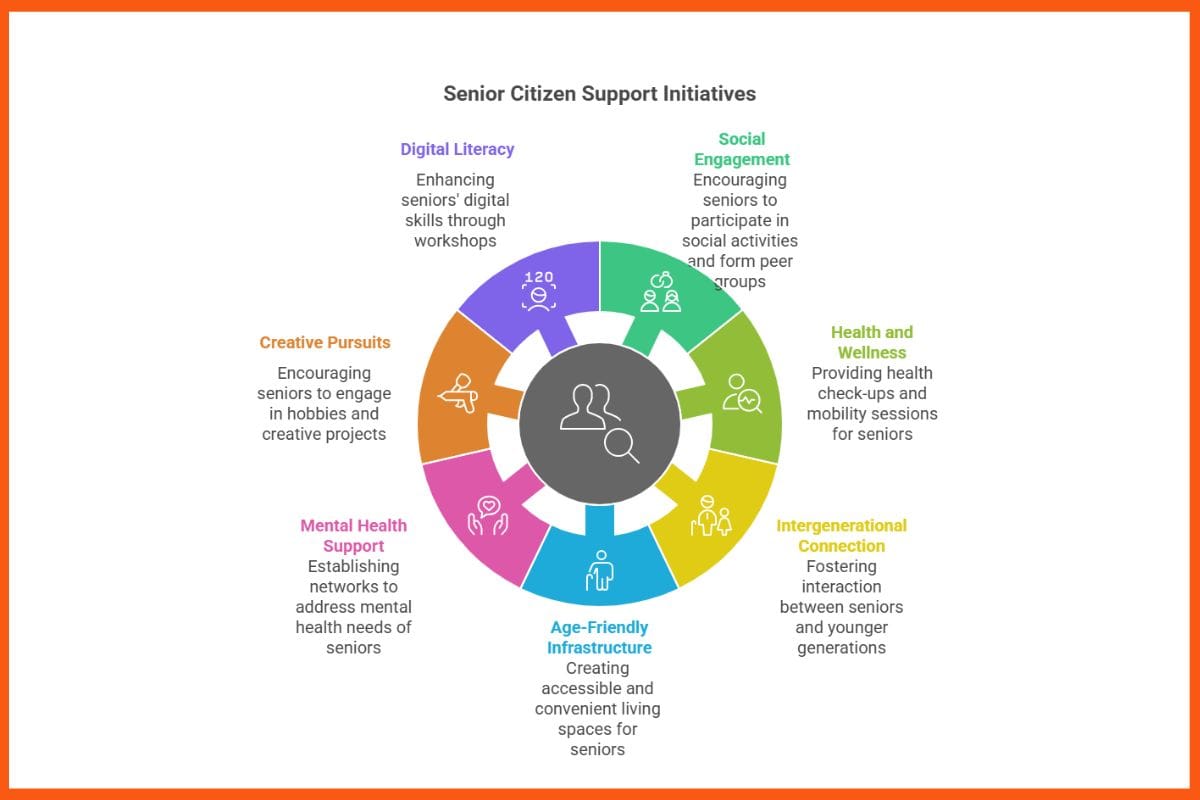This article has been contributed by Mr. Adarsh Narahari, Founder & Managing Director at Primus Senior Living.
India has been undergoing a monumental demographic transition over the past few decades – from being a youth-led nation to now accommodating a rapidly ageing population. India is home to the world’s second-largest elderly population at present and is expected to double its senior citizens’ count by 2050.
Ageing in India comes with numerous personal challenges – including physical and cognitive health decline, mobility issues, feelings of social isolation, loneliness, emotional and financial dependence and much more. These factors are further compounded by the country’s evolving social conditions and suboptimal geriatric care facilities, rising healthcare costs, and continued surge of nuclear families, making elderly care in India a task.
Emphasis on ‘Healthspan’
Despite the challenges, India’s elderly population deserves to age with dignity while remaining fit and healthy, focusing on ‘healthspan’ more than ‘lifespan’. ‘Lifespan’ refers to how many years one remains alive, whereas ‘healthspan’ demonstrates for how long one remains healthy and disease-free. In India, the gap between life expectancy and healthy life expectancy has continued to widen in recent years. Data from 2022 indicates this gap now stands at roughly a decade, meaning India’s elders are, on average, spending 10 years or more burdened by various diseases or disorders.
Even as medical and longevity research advances worldwide, attempting to increase life expectancy, the concept of healthspan, which emphasizes not just living a longer life but also a healthier and productive one, is also gaining traction. Essentially, improving one’s healthspan is focused on boosting vitality and overall quality of life. To that end, while adopting certain healthy habits like getting enough sleep, exercising daily, having a balanced diet and saying no to alcohol and smoking are helpful, these aren’t always full-proof solutions.

Ushering the Active Ageing Revolution in India
When it comes to improving the quality of life amongst the elderly, ‘active ageing’ has the potential to be a game-changer. Defined by the World Health Organization (WHO) as “the process of optimizing opportunities for health, participation, and security in order to enhance quality of life as people age”, active ageing entails a comprehensive, multi-faceted approach that simultaneously promotes physical fitness, mental wellness and social engagement of seniors. Interestingly, this is in contrast to the popular perception of older people being inactive or lacking in movement.
The United Nations has declared 2021-2030 as the ‘Decade of Healthy Ageing’, while the government too has emphasized elder care as an integral part of the nation’s progress and development. The collective desire to see our seniors thrive – which constitutes the foundation of active ageing – is deep-rooted in India’s socio-cultural heritage. Here are some strategies India can embrace to optimally leverage active aging principles:

- Encourage seniors to participate in offline social/collaborative activities, contribute to community projects and social initiatives, and form their own social circle, peer groups/clubs
- Conduct regular health check-ups and preventive screening camps, preferably at/near the doorstep of seniors, which can help in detecting potential health issues early
- To aid mobility and pain reduction for seniors, organize Yoga and physiotherapy sessions – either in a group or a personalized format
- Foster inter-generational connection and bonding opportunities at homes, family gatherings, community events, multi-generational communities, among other places, wherein senior citizens can interact with the younger generations
- Create dedicated age-friendly infrastructure at residential projects to ensure accessibility and convenience for seniors, including features like anti-skid tiles, emergency panic alerts, etc.
- Establish support networks and helplines to address the mental health and companionship needs of the elderly
- Help seniors pursue their passion projects or creative pursuits such as art, music, etc. and also encourage them to take up new hobbies
- Organize sessions/workshops aimed at enhancing digital and tech literacy amongst the elderly community, including topics like usage of smartphones, software, etc.
As per the latest McKinsey finding, India has roughly a generation before it becomes an ‘old’ country like Japan. Implementing the concept of active and healthy ageing is closely linked to ensuring India is able to reap its demographic dividend, not only to meet its economic aspirations but also the societal goals of living with health, wealth, happiness and purpose. India must continue to build inclusive and sustainable elder care facilities while complementing it with the various active aging strategies as shared above, in order to lead by example towards turning its demographic challenges’ story into one of demographic resilience.

